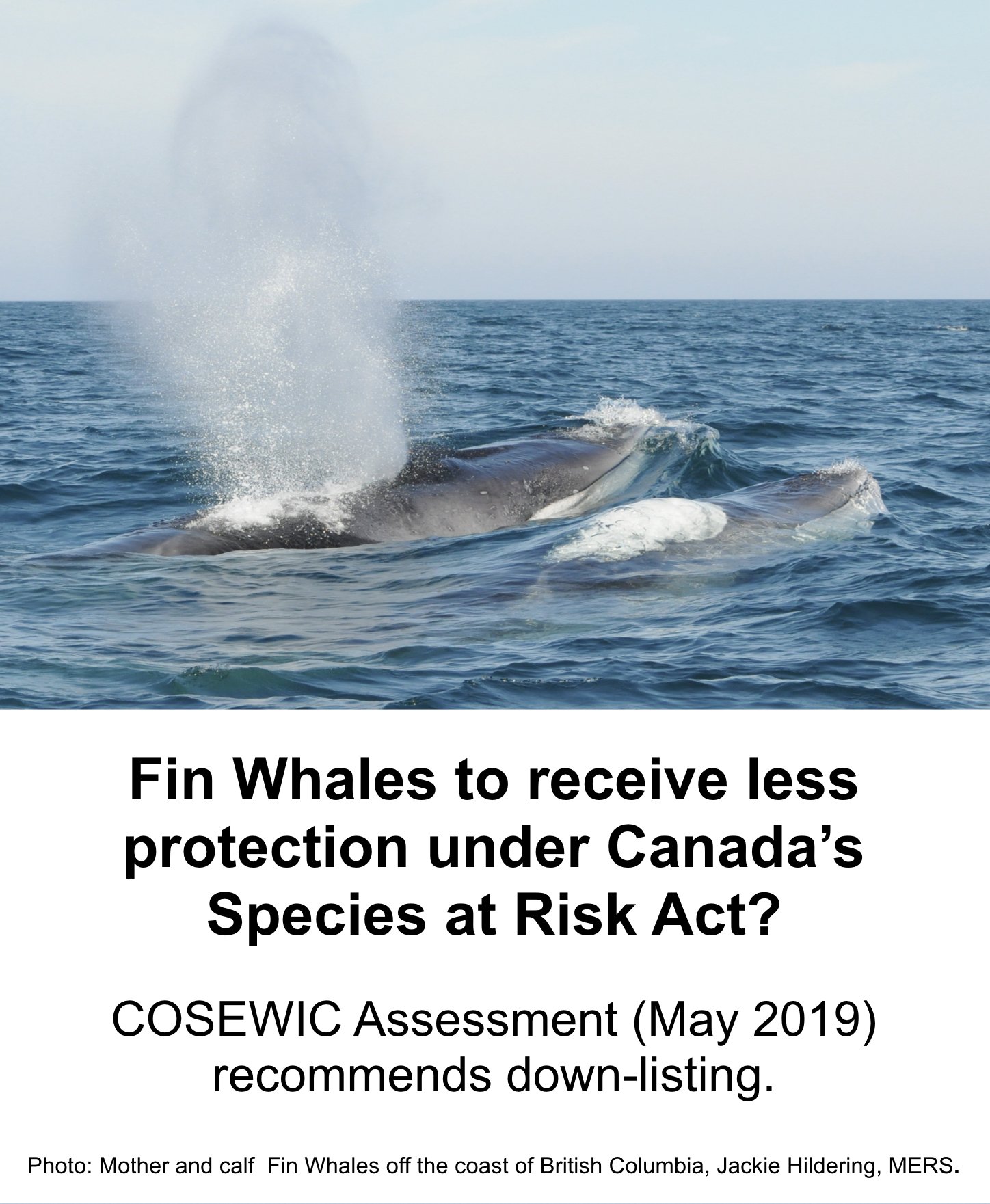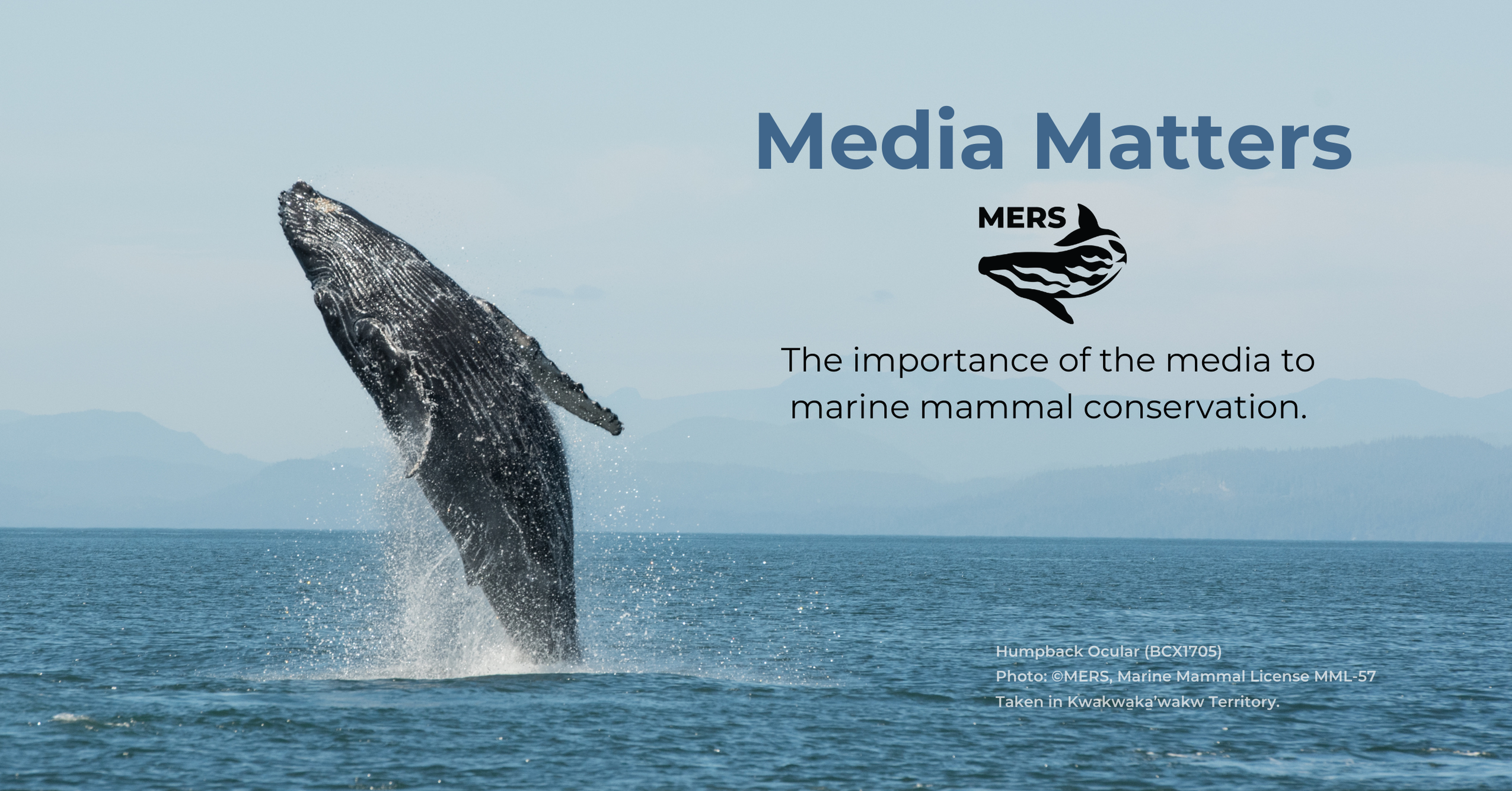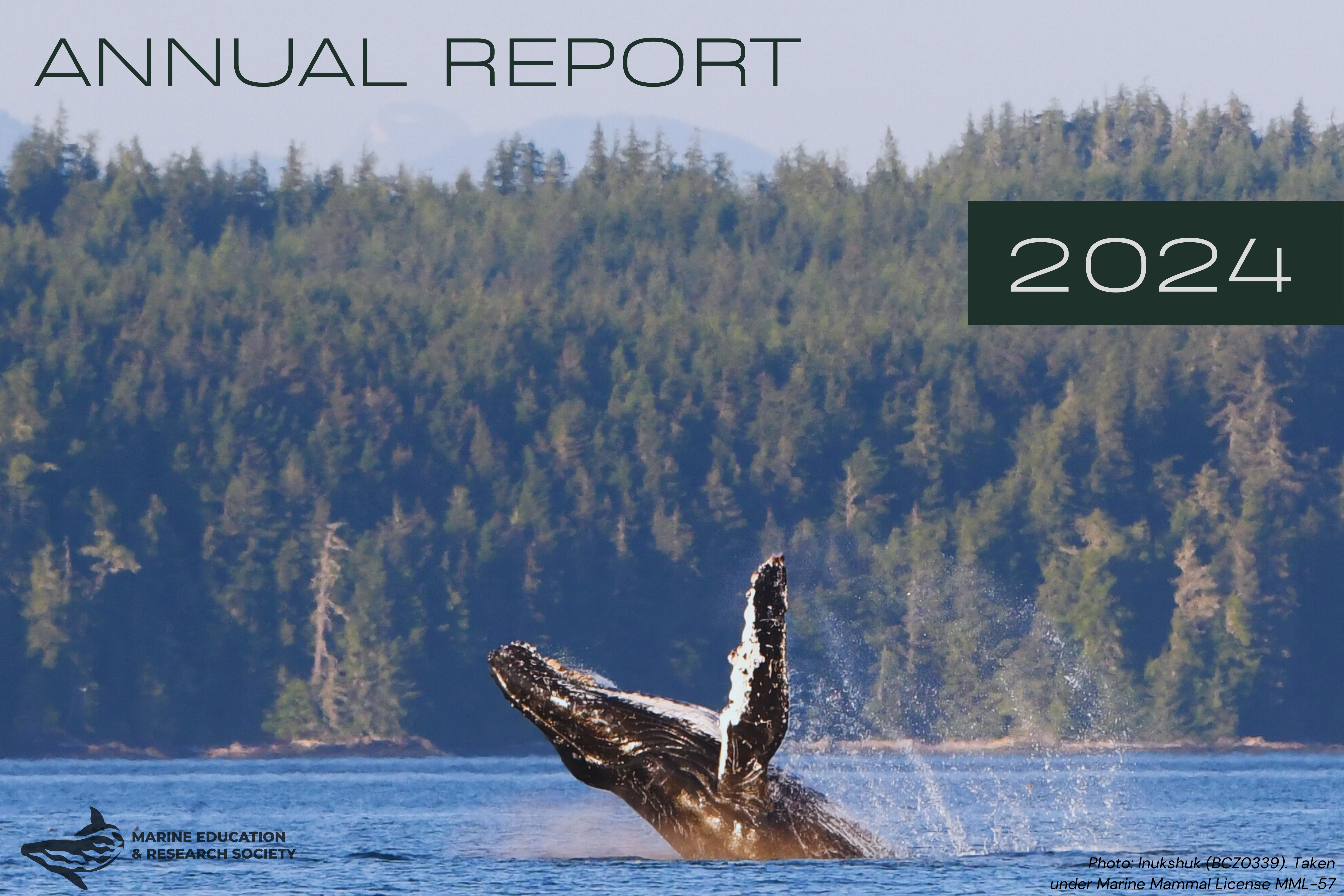Announced yesterday, the protection of Fin Whales off Canada’s Pacific Coast is being reconsidered.

The independent panel of experts tasked with assessing species potentially at risk in Canada is the Committee on the Status of Endangered Wildlife in Canada (COSEWIC). Their May 2019 recommendations include that Fin Whales off Canada’s Pacific coast be down-listed from “Threatened” to of “Special Concern”. If this reassessment is accepted by the Federal Government, it means the population would receive less protection under Canada’s Species at Risk Act (SARA) e.g. critical habitat would not be assigned and there would be no prohibitions under SARA that make it “an offence to kill, harm, harass, capture, or take an individual of the species”
While it is very positive that Fin Whale numbers appear to be increasing after having been intensely whaled prior to their protection in 1976, the reassessment is based on the data for Fin Whale abundance in US waters. There is no population estimate nor confirmed trend for the number of Fin Whales in Pacific Canadian waters.
Based on US Marine Mammal Stock Assessments, the estimate for the California / Washington / Oregon population is approximately 9000 individuals. But, as per the SARA Recovery Strategy (2006) “Fin whales frequent Pacific Canadian waters year round, with highest numbers seen in the summer months. However, it is not known to which population they belong.”
A population estimate is pending as a result of the 2018 PRISMM survey (Pacific Region International Survey for Marine Megafauna).
This current absence of information is a concern were the decision to be made now to change the status of Fin Whales under SARA. It is all the more a concern since ship strikes are known to be a significant threat for Fin Whales and that vessel traffic off the coast of British Columbia is increasing.
Also from the SARA Recovery Strategy: “Blue and Fin whales often occupy shelf-break locations that frequently coincide with shipping lanes, which concentrate large vessel traffic. In a review of 292 records of ship strikes, Jensen and Silber (2004) reported that Fin Whales were the most commonly struck species . . . However, ship strikes offshore are more likely to go undetected. The mortality rate associated with ship strikes is 70-80% (Jensen and Silber 2004).”
From Nichol and Ford (2018) “Ships travelling at speeds above 10 knots in close proximity to Fin Whales have a relatively high probability of colliding with whales (Vanderlaan and Taggart 2007). Although it is difficult to quantify the frequency with which ship strikes involving Fin Whales occur, evidence (in the form of dead carcasses) confirms this species is struck by fast moving ocean going vessels. It is not known whether the possibility of being struck affects the behaviour of Fin Whales, but it is possible that expending energy to avoid ships displaces Fin Whales from important life activities of foraging and breeding (McKenna et al. 2015). Shipping traffic that results in a loss of foraging opportunities and mating opportunities in otherwise important habitat, should be considered a reduction in the area available for foraging and mating in the critical habitat.”
And from Nichol et al (2017) “Ship traffic is predicted to increase as a result of port expansions and developments in both BC and Washington State. We therefore tested future shipping projections from two sources and incorporated these predicted increases in ship traffic into our models to estimate the change in relative risk of ship strike and lethal ship strike by 2030 . . .” There was estimated to be a “10.5-fold difference in average lethal strike risk between high-risk locations and the remainder of the study area in 2030.”
We will update here as more information becomes available about what process there might be to provide input into these concerns.
Sources:
- Fisheries and Oceans Canada. 2017. Action Plan for Blue, Fin, Sei and North Pacific Right Whales (Balaenoptera musculus, B. physalus, B. borealis, and Eubalaena japonica) in Canadian Pacific Waters. Species at Risk Act Action Plan Series. Fisheries and Oceans Canada, Ottawa. iv + 28 pp.
- Gregr, E.J., J. Calambokidis, L. Convey, J.K.B. Ford, R.I. Perry, L. Spaven, M. Zacharias. 2006. Recovery Strategy for Blue, Fin, and Sei Whales (Balaenoptera musculus, B. physalus, and B. borealis) in Pacific Canadian Waters. In Species at Risk Act Recovery Strategy Series. Vancouver: Fisheries and Oceans Canada. vii + 53 pp.
- Keen, E., Pilkington, J., O’Mahony, É., Thompson, K., Hendricks, B., Robinson, N., Dundas, A., Nichol, L., Alidina, H., Meuter, H., Picard, C. and Wray, J., 2021. Fin whales of the Great Bear Rainforest: Balaenoptera physalus velifera in a Canadian Pacific fjord system. PLOS ONE, 16(9), p.e0256815.
- Nichol, L.M., Abernethy, R.M., Wright, B.M., Heaslip, S., Spaven, L.D., Towers, J.R., Pilkington J.F., Stredulinsky, E.H., and Ford, J.K.B. 2018. Distribution, movements and habitat fidelity patterns of Fin Whales (Balaenoptera physalus) in Canadian Pacific Waters. DFO Can. Sci. Advis. Sec. Res. Doc. 2017/004. vii + 52 p.
- Nichol, L.M. and Ford, J.K.B. 2018. Information in Support of the Identification of Habitat of Special Importance to Fin Whales (Balaenoptera physalus) in Canadian Pacific Waters. DFO Can. Sci. Advis. Sec. Res. Doc. 2018/031. vi + 29 p.
- Nichol, L.M., Wright, B.M., O’Hara, P., and Ford, J.K.B. 2017. Assessing the risk of lethal ship strikes to humpback (Megaptera novaeangliae) and fin (Balaenoptera physalus) whales off the west coast of Vancouver Island, Canada. DFO Can. Sci. Advis. Sec. Res. Doc. 2017/007. vii + 33 p
- Pilkington, J.F., Stredulinsky, E.H., Abernethy, R.M., and Ford, J.K.B. 2018. Patterns of Fin whale (Balaenoptera physalus) Seasonality and Relative Distribution in Canadian Pacific Waters Inferred from Passive Acoustic Monitoring. DFO Can. Sci. Advis. Sec. Res. Doc. 2018/032. vi + 26 p.
- Towers, J.R., M. Malleson, C.J. McMillan, J. Cogan, S. Berta, and C. Birdsall. 2018. Occurrence of fin whales (Balaenoptera physalus) between Vancouver Island and continental North America. Northwestern Naturalist 99: 49-57.
- US Marine Mammal Stock Assessments 2016 – FIN WHALE (Balaenoptera physalus physalus): California/Oregon/Washington Stock


